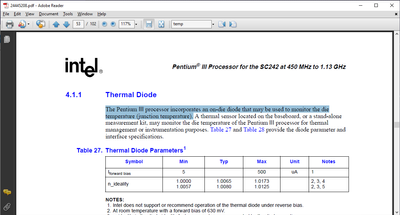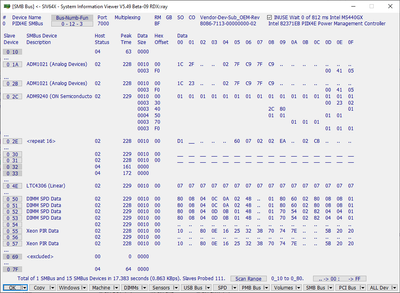First post, by AlephZaku
I recently got a 700Mhz coppermine Pentium 3 in a slot 1 cartridge, with one of those heatsinks that's held in place with the little plastic pins that are supposed to be really hard to remove without breaking. I can't get a temperature reading on it, so I can't tell if it's running too hot right now either.
So, my main questions:
- If I don't have any internal sensors, is there any other way to take the temperature or approximate how well heat's transfer to the heat sink?
- For anyone out there that's done this and did have a way to get the temperature, did it make much of a difference?

